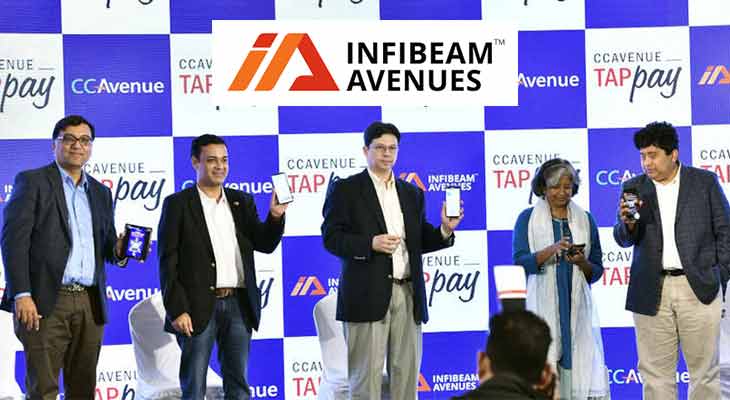Finance World
How Zomato Turned Profitable: A Landmark Achievement in the Indian Food Delivery Market

In this article, we will be talking about the reasons How Zomato Turned Profitable? Zomato, the leading Indian food delivery platform, achieved a significant milestone by turning profitable for the first time in the first quarter of fiscal year 2024. This achievement is a testament to the company’s strategic initiatives and the favorable market conditions in the Indian food delivery industry. In this article, we will explore the factors that contributed to Zomato’s profitability and the key actions the company took to reach this landmark.
Zomato’s Path to Profitability
Steady Growth in Food Delivery Business
One of the pivotal factors behind Zomato’s profitability was the continued growth of its food delivery business. The company experienced an impressive 11% year-over-year increase in gross order value (GOV). The rising demand for food delivery services in India played a crucial role in driving Zomato’s revenue growth.
The Success of Zomato Gold
Zomato’s loyalty program, Zomato Gold, proved to be a success with users, contributing significantly to the company’s profitability. The number of active subscribers increased by an impressive 30% year-over-year. The program’s benefits and discounts on dining out further enhanced its popularity, attracting more customers to Zomato’s platform.
Cost-Cutting Measures
Zomato’s efforts to reduce operational costs had a positive impact on its financials. The company managed to lower its operating expenses by 10% year-over-year, which further contributed to its profitability. By optimizing processes and streamlining operations, Zomato was able to achieve significant cost savings.
Favorable Market Conditions
Zomato benefited from several tailwinds in the Indian food delivery market. The industry continued its rapid expansion, and experts predict that online food orders could reach ₹1 trillion (~$125 billion) by 2025. Moreover, the Indian government’s support through favorable policies facilitated the growth and development of the food delivery industry.
Zomato’s Strategic Actions
To achieve profitability, Zomato implemented several strategic actions:

1. Increased Focus on Food Delivery
Zomato made a strategic decision to focus primarily on its core food delivery business. The company had previously ventured into other areas, such as grocery delivery and quick commerce. However, by narrowing its focus, Zomato could allocate resources more effectively and strengthen its position in the competitive food delivery market.
2. Product and Technology Enhancements
To enhance user experience and operational efficiency, Zomato invested in its product and technology. The company introduced a new algorithm that improved the matching of orders with delivery partners, ensuring faster and more reliable deliveries for customers.
3. Cost Optimization
To bolster its financial performance, Zomato undertook cost optimization measures. Negotiating lower commissions with partner restaurants and reducing marketing expenses were some of the key steps taken to cut down operational costs.
4. Enhanced Customer Experience
Understanding the significance of customer satisfaction, Zomato focused on enhancing the overall customer experience. The introduction of features like live order tracking empowered users with real-time updates, leading to improved customer loyalty and retention.

Conclusion
Zomato’s journey to profitability was marked by perseverance, innovation, and a deep understanding of market dynamics. By capitalizing on the growing demand for food delivery services in India and adopting strategic measures, the company achieved a remarkable turnaround. As the Indian food delivery market continues to flourish, Zomato is well-positioned to sustain its success and drive future growth.
FAQs
1. How did Zomato achieve profitability?
Zomato achieved profitability through a combination of factors, including steady growth in its food delivery business, the success of its loyalty program (Zomato Gold), cost-cutting measures, and the support of favorable market conditions.
2. What contributed to Zomato’s revenue growth?
Zomato’s revenue growth was fueled by the rising demand for food delivery services in India, leading to an 11% year-over-year increase in gross order value (GOV).
3. How did Zomato improve customer experience?
Zomato improved customer experience by introducing new features, such as live order tracking, which provided real-time updates to users.
4. What strategic actions did Zomato take to become profitable?
Zomato focused on its core food delivery business, enhanced its product and technology, optimized costs, and prioritized customer satisfaction to achieve profitability.
5. What are the prospects for Zomato in the future?
With the Indian food delivery market projected to grow rapidly, Zomato is well-positioned for continued success and further expansion in the years to come.
Visit Tradealone for more Updates
Finance World
Why Muthoot Finance is not affected by the small cap and mid cap fall?

This week, if you’ve been keeping an eye on the stock market, you might’ve noticed something unusual. While the small cap and mid cap markets took a serious dive, Muthoot Finance seemed to just avoid it, falling by a mere 2%. So, what’s their secret?
What is the business of Muthoot Finance?
First up, Muthoot Finance has a strong foothold in gold loans. Now, why does this matter? Well, when other investments seem risky, people tend to fall back on gold because it’s considered a safer bet. With gold prices staying high, Muthoot’s gold loan business is like a stable ship in a stormy sea.
Muthoot Finance target price by Kotak
Kotak Institutional Equities is pretty optimistic about Muthoot, recommending a “buy” with a target of Rs 1,500. They think Muthoot is in a prime spot to grab a bigger slice of the gold loan market. Plus, with some Non-Banking Financial Companies (NBFCs) hitting a rough patch, Muthoot has a clear ground to expand and grow further. Unlike NBFC, Muthoot has a strong ground presence with offices and branches, they have physical repo with their customers, unlike NBFC who operate from AC offices.
New Friends and New Frontiers
Muthoot isn’t just sitting pretty with its gold loans; it’s also making moves. It teamed up with Evfin to finance electric two-wheelers across India. And there’s more – Muthoot FinCorp has brought Veefin Solutions on board to kick off supply chain finance operations. This means they’re planning to lend a hand to small and medium businesses, helping them keep the wheels turning. So, its a great news that Muthoot is expanding into fields that are not dependent on gold loans alone.
Spreading Their Wings
Muthoot Microfin, a part of the Muthoot Group, is pushing into new territories too. They’ve just set foot in Telangana and have their sights set on Andhra Pradesh next. This move is about bringing more people into the financial fold, especially in places where banking services might be hard to come by. This gives an edge to Muthoot over banks and NBFC.
Are you wondering whether to invest in Muthoot Finance or Manappuram Gold? Take a look at this:
So, What’s the Deal?
While the market’s mood swings have sent some companies into a pit, Muthoot Finance has managed to stay stable. Thanks to its focus on gold loans, strategic partnerships, and expansion plans, it’s not just surviving; it’s set to thrive. So, while the rest of the market might be catching its breath, Muthoot is marching on, steady as ever.
Keep following us for more such latest news on TradeAlone.
Finance World
Infibeam Avenues Ltd expands into the US Market with an Acquisition

Hello, digital pioneers and fintech enthusiasts! Let’s dive into a groundbreaking announcement for Infibeam. Infibeam Avenues Ltd, an AI-powered financial technology, is embarking on an exciting journey by acquiring a 20% stake in XDuce. XDuce is a mastermind in enterprise Application and AI development based in the United States. This bold move involves an investment of USD 10 million. This also marks a significant milestone in Infibeam Avenues Ltd’s global expansion narrative.
XDuce: A Hub of Innovation
Nestled in the heart of New Jersey, XDuce boasts a team of over 150 software developers. They’re a team behind the curtain for marquee clients like Bank of America and Morgan Stanley, to name a few. XDuce’s expertise in business application implementations and transformation is nothing short of legendary in the financial and insurance sectors of North America.
A Fusion of Giants
So, what happens when Infibeam Avenues Ltd and XDuce comes together? Infibeam Avenues Ltd wants to merge it’s AI Solutions and CCAvenue Payments business into the network that XDuce has built. This collaboration is about expanding business footprints, revolutionizing how AI-driven technologies are employed in fraud detection, authentication, and risk identification in the financial sector of the US.
Redefining Financial Technology
Imagine a world where transaction fraud is no longer a looming threat, thanks to state-of-the-art AI technologies. That’s the vision Mr. Jay Dave, CEO of XDuce, and Mr. Rajesh Kumar SA, CEO of Phronetic.AI, share. By integrating PhroneticAI abilities with XDuce’s solutions, they will offer businesses and consumers in the US with security and efficiency.
The Road Ahead
According to Mr. Vishwas Patel, Joint Managing Director of Infibeam Avenues Ltd, international business currently contributes less than 10% to the company’s total revenue. But with strategic moves like this, they’re aiming for international business to soar to 30% of total revenue in the coming years.
Infibeam Avenues Ltd at a Glance
Infibeam Avenues Ltd is at the forefront of offering digital payment solutions and enterprise software platforms across the globe. With a transaction worth INR 4.5 trillion (US$ 54 billion) processed in FY23, and a client base of over 10 million. Spread across digital payments and enterprise software platforms, they’re leading digital revolution.
Wrapping Up
The strategic investment in XDuce is a bold step towards Infibeam Avenues Ltd’s vision of global expansion and innovation.
Stay tuned with Tradealone, as we continue to follow this exciting journey of Infibeam Avenues Ltd. Stock price for Infibeam closed 7% up today. We also see a continues profit growth for Infibeam Avenues over the past 4 years. Although, we cant recommend a buy or sell call for the stock, however we feel this stock deserves your attention.
Finance World
Satin Creditcare Expands its Reach by entering Telangana and Andhra Pradesh, stock has doubled so far this year

In a country where financial inclusion remains a major yet challenging goal, the expansion of services to underbanked regions marks a significant step forward. Satin Creditcare Network Limited (SCNL), a leading name in microfinance, announces its strategic entry into Telangana and Andhra Pradesh. This move not only amplifies SCNL’s presence to 26 states and union territories across India but also underlines its commitment to empowering the economically marginalized communities with vital financial services.
A Leap Towards Nationwide Financial Inclusion: SCNL’s mission to drive financial inclusion is more than just a business expansion; it’s a pledge to reach the unreached. The opening of two new branches in Telangana (Warangal and Huzurabad) and one in Kadiri, Andhra Pradesh, is a testament to SCNL’s dedication to making financial services accessible to all, especially in rural and semi-urban areas where banking facilities are scarce.
Why Telangana and Andhra Pradesh?
The choice of Telangana and Andhra Pradesh for SCNL’s latest expansion is strategic. Both states have shown promising economic growth yet house significant populations that lack access to basic financial services. By stepping into these states, SCNL aims to fill this gap, offering microfinance solutions that can serve as a catalyst for economic empowerment and sustainable development. Moreover, Telangana is a fast growing hub for Pharma industry as the state capital Hyderabad leads the way.
SCNL’s Blueprint for Empowerment
SCNL’s approach to empowerment through financial inclusion is holistic. Focused on rural India, with 76% of its operations dedicated to rural communities across 97,000 villages, SCNL is not just providing financial services but is also contributing to the rural economy’s growth. This expansion is a stride towards enabling access to credit for the underserved, thereby fostering an environment of economic resilience and growth.
A Message from the Leadership
Mr. HP Singh, Chairman cum Managing Director of SCNL, remarks, “Our expansion into Telangana and Andhra Pradesh is a significant milestone in our journey towards a financially inclusive India. It’s not merely about increasing our geographical footprint; it’s about touching lives, empowering the marginalized, and contributing to the nation’s economic fabric. We’re here to make a difference, one individual, one community at a time.”
Ashirvad Microfinance is a fast growing company as well. Check it out if you are interested.
Beyond Expansion – A Look at SCNL’s Innovations
SCNL’s innovations extend beyond traditional microfinance. The institution’s portfolio includes loans to MSMEs, affordable housing loans through its subsidiary Satin Housing Finance Limited (SHFL), and the commencement of MSME business through Satin Finserv Limited (SFL). These initiatives demonstrate SCNL’s commitment to diversifying financial solutions that cater to various needs of the underserved.
The Road Ahead for SCNL
As SCNL carves new paths in Telangana and Andhra Pradesh, the future looks promising. This expansion is not just about growth but about deepening the impact of financial inclusion across India. With continued innovation and a steadfast commitment to its mission, SCNL is poised to create significant strides in empowering communities and fostering economic development across the country. Moreover, the stock price for Satin Creditcare has almost doubled in the last one year.
Conclusion: SCNL’s expansion into Telangana and Andhra Pradesh marks a new chapter in its mission to facilitate financial inclusion across India. By reaching out to the economically marginalized sections of society, SCNL strengthens its role as a catalyst for economic empowerment and sustainable development. As we watch this journey unfold, the prospects for a financially inclusive India appear brighter than ever. Despite that we do not see any positive signs from the revenue and profit growth of the company over the last 5 years. Thus, we feel that investors must be cautious while investing here.
Remember that microfinance companies also face competitions from the major banks. However, as this move is towards uncharted regions of Telangana and Andhra, we do not think that the banks would pose any risk to Satin Creditcare.
Call-to-Action: We invite you to join the conversation: How do you think SCNL’s expansion will impact financial inclusion in Telangana and Andhra Pradesh? Share your thoughts and insights in the comments below. Let’s discuss how financial empowerment can transform lives and communities. Also, please follow Tradealone for more such latest updates.
-

 Profit Making Idea1 year ago
Profit Making Idea1 year agoThe Grandfather Son (GFS) Strategy: A Technical Analysis Trading Strategy
-

 Uncategorized8 months ago
Uncategorized8 months agoA BJP victory and the Stock Market: what to expect this monday
-

 Technology5 months ago
Technology5 months agoInnovative Metro Ticketing Revolution in Pune by Route Mobile and Billeasy’s RCS Messaging. Stock trades flat
-

 editor9 months ago
editor9 months agoHow to research for Multibagger Stocks
-

 Trending12 months ago
Trending12 months agoDoes the “Tata-Apple venture” benefit Tata shares?
-

 Market ABC8 months ago
Market ABC8 months agoSpotting an operator game: How to do it?
-

 Market ABC1 year ago
Market ABC1 year agoThe Pullback Strategy: A Timeless Approach to Investment Success
-

 Finance World10 months ago
Finance World10 months agoDmart VS Walmart – Business Model of Retail Giants



